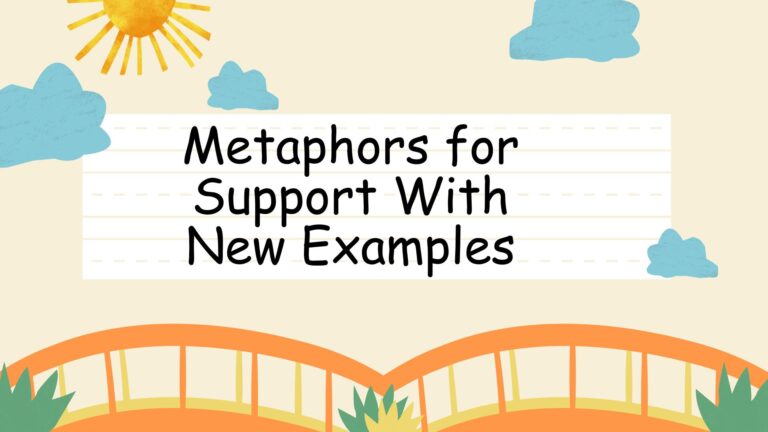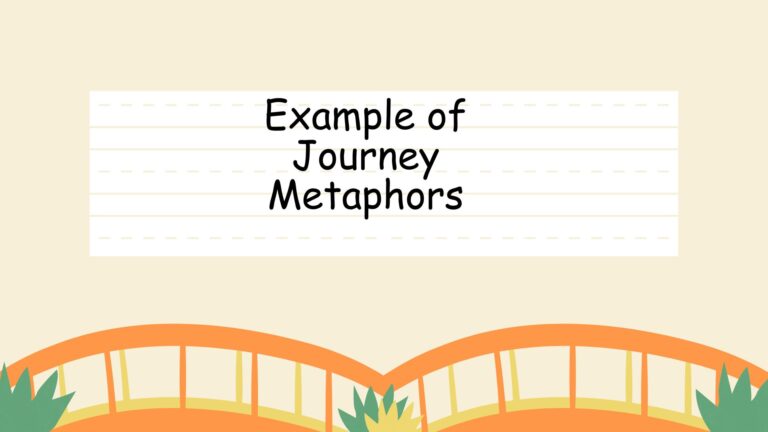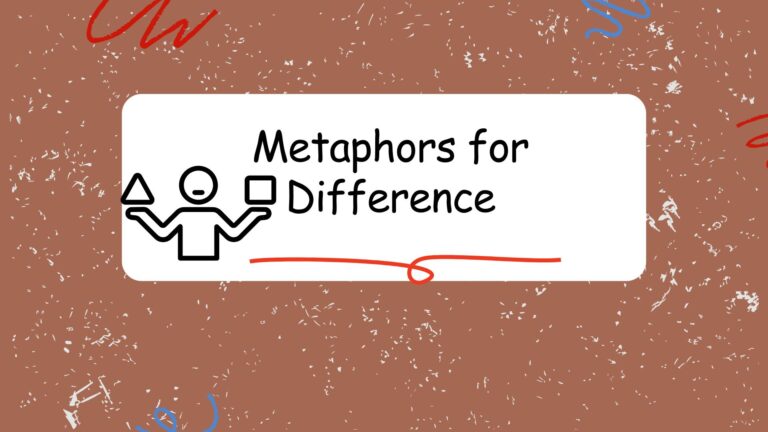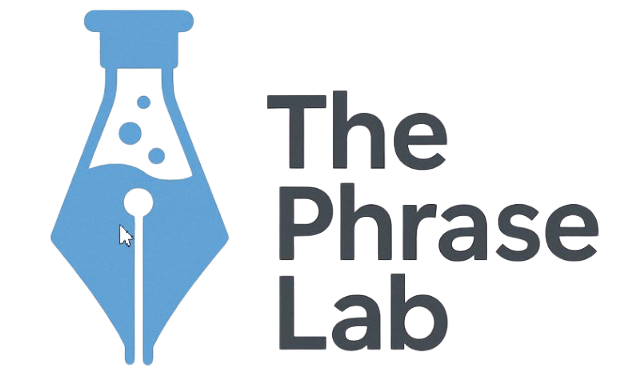
Metaphors for Mental Health: Understanding Figurative Language
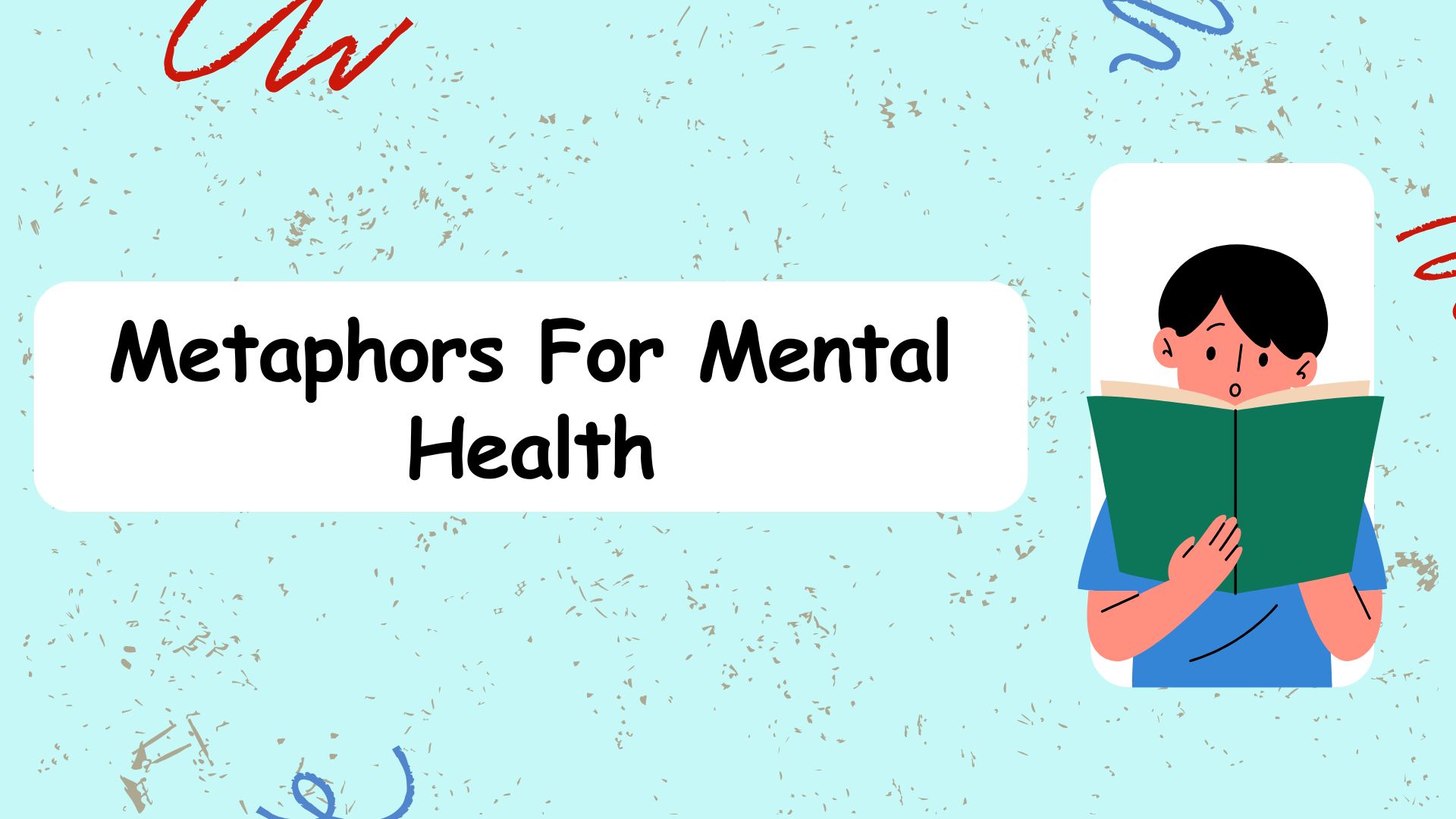
Metaphors are powerful tools in language, allowing us to understand complex concepts by relating them to something more familiar. When it comes to mental health, metaphors can be especially helpful in expressing often indescribable feelings and experiences. This article explores the role of metaphors in understanding and communicating about mental health, providing a comprehensive guide for English language learners and anyone interested in gaining a deeper understanding of this important topic. By examining various types of metaphors and their usage, we aim to enhance your ability to discuss mental health with clarity and empathy.
Table of Contents
- Introduction
- Definition of Metaphor in Mental Health
- Structural Breakdown of Mental Health Metaphors
- Types and Categories of Mental Health Metaphors
- Examples of Metaphors for Mental Health
- Usage Rules for Mental Health Metaphors
- Common Mistakes When Using Mental Health Metaphors
- Practice Exercises
- Advanced Topics in Mental Health Metaphors
- Frequently Asked Questions
- Conclusion
Definition of Metaphor in Mental Health
A metaphor is a figure of speech that directly compares two unlike things without using “like” or “as.” Its purpose is to provide clarity or emotional impact by associating an abstract concept with a more concrete one. In the context of mental health, metaphors are used to articulate complex emotional states, psychological struggles, and cognitive processes in relatable terms. They allow individuals to express their experiences when literal language falls short, making these feelings more accessible to both themselves and others. Metaphors in this domain serve as a bridge, connecting the intangible world of mental well-being with tangible imagery that can be easily grasped.
The function of metaphors in discussing mental health is multifaceted. First, they provide a means of externalizing internal experiences. By representing feelings as external objects or scenarios, individuals can gain a sense of distance and control over their emotions. Second, metaphors normalize mental health struggles by framing them within universally understood concepts like storms, journeys, or battles. This normalization can reduce stigma and encourage open communication. Finally, metaphors enhance empathy by allowing others to vicariously experience the emotional landscape of someone struggling with their mental health. The use of sensory details within these metaphors can evoke vivid imagery and foster a deeper understanding.
Metaphors are used in various contexts related to mental health. They appear in personal narratives, therapeutic settings, public awareness campaigns, and academic literature. In therapy, metaphors can help clients articulate their feelings and develop coping strategies. In public discourse, they can raise awareness and challenge misconceptions about mental health. In literature and art, they can provide nuanced portrayals of mental health experiences, fostering empathy and understanding. Understanding the role and power of metaphors is crucial for anyone seeking to improve their communication about mental health, whether in personal or professional settings.
Structural Breakdown of Mental Health Metaphors
The structure of a metaphor typically involves two key elements: the tenor and the vehicle. The tenor is the subject being described (in this case, a mental health condition or experience), and the vehicle is the object or concept used to represent it. Understanding this structure can help in deconstructing and interpreting metaphors effectively.
For example, in the metaphor “Depression is a dark cloud,” “depression” is the tenor, and “a dark cloud” is the vehicle. The metaphor works by drawing parallels between the characteristics of a dark cloud (e.g., heaviness, obscurity, impending gloom) and the experience of depression. The connection isn’t literal but rather based on shared qualities or emotional resonances. The effectiveness of a metaphor depends on the strength and relevance of this connection.
The effectiveness of a metaphor also relies on the implied comparison. The audience must understand the characteristics of the vehicle and how they relate to the tenor. If the connection is too obscure or unfamiliar, the metaphor may fail to communicate the intended meaning. Cultural context also plays a role in interpreting metaphors; a metaphor that resonates in one culture may not have the same impact in another.
Furthermore, the extended metaphor can be used to develop a more complex and nuanced understanding of mental health. An extended metaphor involves using the same vehicle to describe various aspects of the tenor over a longer passage. For example, the metaphor of “depression as a dark cloud” can be extended to describe the cloud’s size, its movement, its impact on the surrounding environment, and strategies for weathering the storm. This allows for a more comprehensive exploration of the experience of depression.
Types and Categories of Mental Health Metaphors
Metaphors used to describe mental health can be broadly categorized based on the type of imagery they employ. Understanding these categories can help us appreciate the variety of ways that mental health experiences can be expressed metaphorically.
Journey Metaphors
Journey metaphors frame mental health recovery as a journey, often with a beginning, challenges along the way, and an ultimate destination. These metaphors emphasize progress, setbacks, and the importance of perseverance. The road may be described as winding, uphill, or filled with obstacles, reflecting the difficulties encountered during the recovery process. Examples include “navigating depression,” “embarking on a journey to recovery,” and “getting back on track.”
Weather Metaphors
Weather metaphors use weather conditions to represent emotional states. Storms, clouds, sunshine, and rain are commonly used to describe feelings such as anxiety, depression, and hope. For example, “a storm of emotions,” “a dark cloud hanging overhead,” and “a ray of sunshine after a long winter” are frequently used to portray intense emotional turmoil, persistent sadness, and newfound happiness respectively.
Container Metaphors
Container metaphors describe the mind or emotions as containers. These metaphors often relate to feelings of being overwhelmed or unable to contain emotions. Phrases like “bottling up emotions,” “overflowing with anxiety,” and “feeling empty inside” fall under this category. They highlight the idea of emotions being held within a limited space, sometimes to the point of bursting or feeling devoid of content.
Weight Metaphors
Weight metaphors use the concept of weight to describe the burden of mental health issues. Feelings such as depression, stress, and anxiety are often described as heavy, burdensome, or weighing someone down. Examples include “carrying the weight of the world on your shoulders,” “feeling weighed down by depression,” and “a heavy heart.” These metaphors convey the sense of being burdened and restricted by emotional distress.
Battle Metaphors
Battle metaphors frame mental health struggles as a fight or war. These metaphors often involve terms like “fighting depression,” “battling anxiety,” and “overcoming challenges.” While they can be empowering, they can also be problematic if they imply that mental health is something that can be simply “won” or “lost.” They emphasize the effort and determination required to manage mental health issues.
Darkness and Light Metaphors
Darkness and light metaphors use the contrast between darkness and light to symbolize negative and positive emotional states, respectively. Darkness is often associated with depression, despair, and hopelessness, while light represents hope, joy, and recovery. Examples include “a dark place,” “seeing the light at the end of the tunnel,” and “a beacon of hope.” These metaphors are particularly effective in conveying the stark contrast between different mental states.
Nature Metaphors
Nature metaphors utilize elements of the natural world to describe mental health experiences. These metaphors can range from describing feelings as “growing like weeds” to comparing resilience to the strength of a tree. They connect emotional states to the broader context of the environment, offering a sense of grounding and perspective. Examples include “feeling rooted,” “blooming after a long winter,” and “a storm brewing inside.”
Examples of Metaphors for Mental Health
Here are some extensive examples of metaphors used to describe various aspects of mental health, categorized by the types discussed above. These examples illustrate the diverse ways in which metaphors can be used to express complex emotional states and experiences.
The table below shows examples of journey metaphors used in the context of mental health.
| Metaphor | Explanation |
|---|---|
| “Navigating the labyrinth of anxiety.” | Anxiety is likened to a complex maze, emphasizing the feeling of being lost and disoriented. |
| “Embarking on a journey of self-discovery to heal from trauma.” | Healing is seen as an active exploration, requiring courage and effort. |
| “Climbing the mountain of depression.” | Depression is portrayed as a steep, challenging climb, highlighting the difficulty of overcoming it. |
| “Walking a tightrope of emotions.” | Emotions are depicted as precarious and requiring careful balance. |
| “Lost in the wilderness of grief.” | Grief is compared to a vast, unfamiliar territory, emphasizing the feeling of being overwhelmed and disoriented. |
| “Finding my way back to myself after burnout.” | Burnout is seen as a departure from one’s true self, and recovery is a process of rediscovering oneself. |
| “Stepping stones to recovery.” | Each small achievement is a step forward in the recovery process. |
| “The long and winding road to acceptance.” | Acceptance is a gradual process with many twists and turns. |
| “Charting a new course for mental wellness.” | Taking control and actively planning for better mental health. |
| “Sailing through the sea of emotions.” | Emotions are vast and sometimes turbulent, like the sea. |
| “Getting back on track after a setback.” | Recovery is not always linear; setbacks are part of the process. |
| “A detour on the road to happiness.” | Experiencing challenges that temporarily delay happiness. |
| “Reaching a crossroads in my mental health journey.” | Facing a significant decision point in managing mental health. |
| “Running a marathon of resilience.” | Resilience is a long-term effort requiring endurance. |
| “The uphill battle against stigma.” | Confronting and overcoming societal stigma related to mental health. |
| “Mapping out strategies for coping.” | Developing a plan for managing mental health challenges. |
| “A scenic route to self-care.” | Choosing enjoyable and fulfilling activities for self-care. |
| “The rocky path of healing.” | Acknowledging that healing can be difficult and uneven. |
| “Taking the first step towards recovery.” | Initiating the process of healing and improvement. |
| “A pit stop for self-reflection.” | Taking time to pause and consider one’s thoughts and feelings. |
| “The bridge to a better mindset.” | Overcoming obstacles to achieve a more positive outlook. |
| “Hiking through the forest of fear.” | Confronting and navigating feelings of fear and anxiety. |
| “Climbing the ladder of self-esteem.” | Building confidence and self-worth through effort and achievement. |
| “Sprinting towards mental clarity.” | Actively working to achieve a clear and focused state of mind. |

The table below shows examples of weather metaphors used in the context of mental health.
| Metaphor | Explanation |
|---|---|
| “A storm of emotions raging inside.” | Intense and overwhelming feelings are compared to a violent storm. |
| “A dark cloud hanging over my head.” | Persistent sadness or depression is represented by a looming dark cloud. |
| “Feeling like a hurricane of anxiety.” | Anxiety is portrayed as a destructive and chaotic force. |
| “A ray of sunshine after a long winter.” | Hope and happiness emerge after a period of difficulty. |
| “The calm after the storm of a panic attack.” | Relief and peace that follow a period of intense anxiety. |
| “Weathering the storm of grief.” | Enduring and coping with the painful experience of grief. |
| “A gentle breeze of mindfulness.” | The calming and soothing effect of practicing mindfulness. |
| “The fog of depression.” | Depression obscures clarity and makes it difficult to see clearly. |
| “Frozen in fear.” | Paralyzed by intense fear or anxiety. |
| “A heatwave of anger.” | Overwhelmed by intense feelings of anger. |
| “The sun breaking through the clouds of despair.” | Experiencing moments of hope amidst feelings of hopelessness. |
| “A drizzle of sadness.” | Experiencing a mild but persistent feeling of sadness. |
| “The thunder of past traumas.” | Haunted by the intense and disruptive memories of past traumas. |
| “A rainbow after the rain of tears.” | Finding hope and beauty after a period of sadness and crying. |
| “The icy grip of loneliness.” | Feeling isolated and emotionally cold due to loneliness. |
| “A whirlwind of thoughts.” | Experiencing a rapid and chaotic stream of thoughts. |
| “The drought of motivation.” | Lacking the energy and desire to pursue goals or activities. |
| “Flooded with memories.” | Overwhelmed by a sudden influx of memories. |
| “The twilight of hope.” | A fading sense of hope or optimism. |
| “A blizzard of stress.” | Overwhelmed by a large amount of stress. |
| “The dawn of a new perspective.” | Gaining a fresh and positive outlook on life. |
| “Eclipsed by self-doubt.” | Feeling overshadowed and hindered by feelings of self-doubt. |
| “The mist of confusion.” | Experiencing a lack of clarity and understanding. |
| “A tidal wave of grief.” | Overwhelmed by intense and powerful feelings of grief. |
| “The aurora of inner peace.” | Experiencing a radiant and beautiful sense of inner calm. |
The table below shows examples of container metaphors used in the context of mental health.
| Metaphor | Explanation |
|---|---|
| “Bottling up my emotions.” | Suppressing or holding back feelings instead of expressing them. |
| “Overflowing with anxiety.” | Feeling overwhelmed by anxious thoughts and feelings. |
| “Feeling empty inside.” | Experiencing a sense of emotional void or lack of fulfillment. |
| “My mind is a pressure cooker.” | Thoughts and feelings are building up to an explosive point. |
| “A well of sadness.” | A deep and seemingly endless source of sadness. |
| “Containing my anger.” | Efforts to control and manage feelings of anger. |
| “A vessel of resilience.” | Possessing a strong capacity to recover from difficulties. |
| “Holding onto hope.” | Clinging to a sense of optimism and positive expectation. |
| “A reservoir of strength.” | Having a reserve of inner strength to draw upon. |
| “Losing control of my emotions.” | Feeling unable to manage or contain one’s feelings. |
| “A Pandora’s Box of memories.” | Unleashing a flood of complicated and potentially negative memories. |
| “A safe space for vulnerability.” | Creating an environment where one feels secure enough to be open. |
| “A treasure chest of positive affirmations.” | Holding a collection of encouraging and uplifting thoughts. |
| “Sealing off my heart.” | Building emotional barriers to protect oneself from pain. |
| “A sponge for other people’s emotions.” | Absorbing and internalizing the feelings of others. |
| “A vault of secrets.” | Keeping deeply personal and private information hidden. |
| “A container of empathy.” | Having a strong capacity to understand and share the feelings of others. |
| “A box of unresolved issues.” | Carrying a collection of problems and conflicts that need to be addressed. |
| “A vessel for creativity.” | Using one’s mind as a source of inspiration and artistic expression. |
| “Opening up to new possibilities.” | Becoming receptive to new opportunities and experiences. |
| “Filling my cup with self-love.” | Prioritizing and nurturing one’s own well-being and happiness. |
| “Emptying my mind through meditation.” | Clearing one’s thoughts and achieving a state of mental calm. |
| “A storage unit for past experiences.” | Holding a collection of memories and lessons learned from the past. |
| “A sanctuary for inner peace.” | Creating a space within oneself where one can find tranquility and calm. |

The table below shows examples of weight metaphors used in the context of mental health.
| Metaphor | Explanation |
|---|---|
| “Carrying the weight of the world on my shoulders.” | Feeling overwhelmed by responsibilities and burdens. |
| “Feeling weighed down by depression.” | Depression is experienced as a heavy and restrictive force. |
| “A heavy heart.” | Sadness and grief are felt as a physical weight in the chest. |
| “The burden of expectations.” | Feeling pressured by the expectations of others. |
| “Shedding the weight of guilt.” | Releasing oneself from feelings of guilt and self-blame. |
| “Carrying the baggage of the past.” | Being burdened by unresolved issues and traumas from the past. |
| “The lightness of forgiveness.” | Experiencing a sense of relief and freedom after forgiving someone. |
| “Weighed down by self-doubt.” | Feeling hindered and restricted by feelings of self-doubt. |
| “The weight of responsibility.” | Feeling burdened by the obligations and duties one must fulfill. |
| “Lifting the burden of anxiety.” | Reducing the intensity and impact of anxious thoughts and feelings. |
| “A ton of stress.” | Experiencing an overwhelming amount of stress. |
| “The heavy cloak of fear.” | Feeling enveloped and restricted by feelings of fear. |
| “Unburdening my soul through therapy.” | Relieving emotional pain and distress through therapeutic intervention. |
| “The crushing weight of loneliness.” | Feeling isolated and emotionally crushed by loneliness. |
| “Carrying the cross of shame.” | Being burdened by deep feelings of shame and self-condemnation. |
| “The anvil of despair.” | Feeling weighed down and trapped by feelings of despair. |
| “Lightening my load through self-care.” | Reducing stress and improving well-being through self-care practices. |
| “The anchor of regret.” | Feeling held back and weighed down by feelings of regret. |
| “A heavy heart full of unspoken words.” | Experiencing sadness and emotional strain due to unexpressed feelings. |
| “The burden of grief.” | Feeling weighed down by the pain and sorrow of grief. |
Usage Rules for Mental Health Metaphors
While metaphors can be powerful tools, it’s important to use them thoughtfully and responsibly. Here are some guidelines to follow:
- Be mindful of the context: Consider the audience and the situation. Some metaphors may be more appropriate in certain settings than others.
- Avoid trivializing serious issues: Ensure that the metaphor accurately reflects the gravity of the mental health experience. Avoid using overly simplistic or cliché metaphors that may diminish the complexity of the issue.
- Be sensitive to individual experiences: Recognize that everyone’s experience with mental health is unique. Avoid making generalizations or assumptions based on a single metaphor.
- Consider the potential impact: Think about how the metaphor might be interpreted by someone struggling with their mental health. Ensure that it is not stigmatizing or discouraging.
- Use metaphors to enhance understanding, not to replace it: Metaphors should complement, not substitute, factual information and professional guidance.
Common Mistakes When Using Mental Health Metaphors
Using metaphors incorrectly can lead to miscommunication or even harm. Here are some common mistakes to avoid:
| Incorrect | Correct | Explanation |
|---|---|---|
| “Just snap out of it.” (implies mental illness is a choice) | “I understand you’re going through a difficult time.” (acknowledges the struggle) | Avoid metaphors that suggest mental health is easily controlled. |
| “Depression is just a phase.” (trivializes the experience) | “Depression can be a serious and debilitating condition.” (recognizes the severity) | Avoid metaphors that minimize the impact of mental illness. |
| “He’s fighting a battle with his demons.” (can be stigmatizing) | “He’s managing his mental health challenges.” (more neutral and supportive) | Be cautious with battle metaphors, as they can be aggressive. |
| “She’s just being dramatic.” (dismissive and invalidating) | “She’s expressing her emotions in a way that feels right to her.” (respectful and accepting) | Avoid metaphors that invalidate someone’s emotions. |
| “You’re drowning in your problems.” (can be overwhelming) | “You’re facing some significant challenges right now.” (less intense and more supportive) | Avoid metaphors that are overly negative or overwhelming. |
Practice Exercises
Test your understanding of metaphors for mental health with these exercises. Identify the type of metaphor used in each sentence and explain its meaning.
| Question | Answer |
|---|---|
| 1. “Anxiety is a relentless storm inside me.” | Weather Metaphor. Explanation: Anxiety is being compared to a storm, emphasizing its intensity and disruptive nature. |
| 2. “Recovery is a marathon, not a sprint.” | Journey Metaphor. Explanation: Recovery is likened to a long-distance race, highlighting the need for endurance and patience. |
| 3. “I felt like I was carrying a mountain of guilt.” | Weight Metaphor. Explanation: Guilt is portrayed as a heavy burden, emphasizing its oppressive effect. |
| 4. “My mind felt like a crowded room, full of chattering voices.” | Container Metaphor. Explanation: The mind is compared to a crowded room, emphasizing the feeling of being overwhelmed by thoughts. |
| 5. “Therapy was like a light at the end of a dark tunnel.” | Darkness/Light Metaphor. Explanation: Therapy is seen as a source of hope and guidance during a difficult time. |
| 6. “He was battling his inner demons.” | Battle Metaphor. Explanation: The person is fighting against their internal struggles. |
| 7. “She blossomed after overcoming her depression.” | Nature Metaphor. Explanation: The person’s growth and flourishing after overcoming a difficult period is likened to a flower blooming. |
| 8. “I felt like I was drowning in sorrow.” | Container Metaphor. Explanation: Sorrow is portrayed as an overwhelming force that is engulfing the person. |
| 9. “My past is a heavy chain, holding me back.” | Weight Metaphor. Explanation: The past is portrayed as a burden that is preventing the person from moving forward. |
| 10. “Finding peace is like navigating a maze.” | Journey Metaphor. Explanation: Achieving peace is portrayed as a complex and challenging journey. |
Exercise 2: Fill in the blanks with appropriate metaphors.
| Question | Answer |
|---|---|
| 1. “His anxiety was like a __________ in his chest.” | storm |
| 2. “She described her depression as a __________ hanging over her life.” | cloud |
| 3. “Therapy helped him __________ the burden of his past.” | lighten |
| 4. “Learning to manage stress is like __________ through a dense forest.” | navigating |
| 5. “His mind was a __________ of thoughts and worries.” | whirlwind |
| 6. “She felt like she was __________ her emotions.” | bottling up |
| 7. “Finding joy after grief is like seeing a __________ after the rain.” | rainbow |
| 8. “His resilience was a __________ of strength.” | reservoir |
| 9. “Overcoming fear is like __________ a mountain.” | climbing |
| 10. “She felt like she was __________ in a sea of despair.” | drowning |
Advanced Topics in Mental Health Metaphors
For advanced learners, exploring the cultural and historical context of mental health metaphors can provide deeper insights. Different cultures may use different metaphors to describe similar experiences, reflecting their unique values and beliefs. For example, some cultures may view mental illness as a spiritual affliction, while others may see it as a medical condition. Understanding these cultural differences can help avoid misunderstandings and promote more effective communication.
Another advanced topic is the use of metaphors in therapeutic interventions. Therapists often use metaphors to help clients articulate their feelings and develop coping strategies. For example, a therapist might use the metaphor of “planting seeds of hope” to encourage a client to focus on positive actions and thoughts. The effectiveness of these metaphors depends on the client’s understanding and acceptance of the imagery.
The ethical considerations of using metaphors in mental health are also important. It’s crucial to avoid using metaphors that are stigmatizing, trivializing, or culturally insensitive. Metaphors should be used to empower and support individuals, not to perpetuate harmful stereotypes or misconceptions. Critically evaluating the potential impact of metaphors is essential for responsible communication.
Frequently Asked Questions
Here are some frequently asked questions about using metaphors for mental health:
- Why are metaphors important in discussing mental health?Metaphors provide a way to express complex and abstract emotional states in relatable terms. They help bridge the gap between personal experience and understanding, making it easier to communicate about mental health challenges.
- Can metaphors be harmful in the context of mental health?Yes, if used carelessly. Metaphors that trivialize or stigmatize mental illness can be harmful. It’s important to use metaphors that are respectful and supportive.
- How can I choose the right metaphor to describe my feelings?Think about the specific qualities of your experience that you want to convey. Consider what imagery resonates with you personally and accurately reflects your feelings. Experiment with different metaphors until you find one that feels right.
- Are some types of metaphors more effective than others?The effectiveness of a metaphor depends on the individual and the context. Some people may find journey metaphors helpful, while others may prefer weather metaphors. It’s important to be flexible and adapt your language to the specific needs of the person you’re communicating with.
- How can I avoid using stigmatizing metaphors?Avoid using metaphors that imply blame, weakness, or lack of control. Focus on metaphors that emphasize resilience, hope, and the possibility of recovery.
- What role do cultural differences play in interpreting metaphors?Cultural backgrounds can significantly influence how metaphors are understood. A metaphor that resonates in one culture may not have the same impact in another. Be mindful of cultural differences and adapt your language accordingly.
- Can metaphors be used in therapy?Yes, therapists often use metaphors to help clients explore their feelings and develop coping strategies. Metaphors can provide a safe and creative way to discuss sensitive topics.
- How can I learn to use metaphors more effectively?Pay attention to the metaphors that others use to describe their experiences. Read literature and poetry, which often employ metaphors to convey complex emotions. Practice using metaphors in your own writing and conversations. The more you practice, the more comfortable and confident you will become.
Conclusion
Metaphors are invaluable tools for understanding and communicating about mental health. By providing a bridge between abstract concepts and relatable imagery, metaphors can enhance empathy, reduce stigma, and facilitate meaningful conversations. Understanding the different types of metaphors, their structural elements, and the rules governing their usage is crucial for effective communication. With practice and sensitivity, you can use metaphors to express complex emotions, support others, and promote a more nuanced understanding of mental well-being.
Remember to always consider the context, audience, and potential impact of your words. Avoid using metaphors that trivialize or stigmatize mental health issues. Instead, focus on metaphors that empower individuals, promote hope, and acknowledge the complexity of their experiences. By using metaphors thoughtfully and responsibly, you can contribute to a more compassionate and understanding dialogue about mental health.


